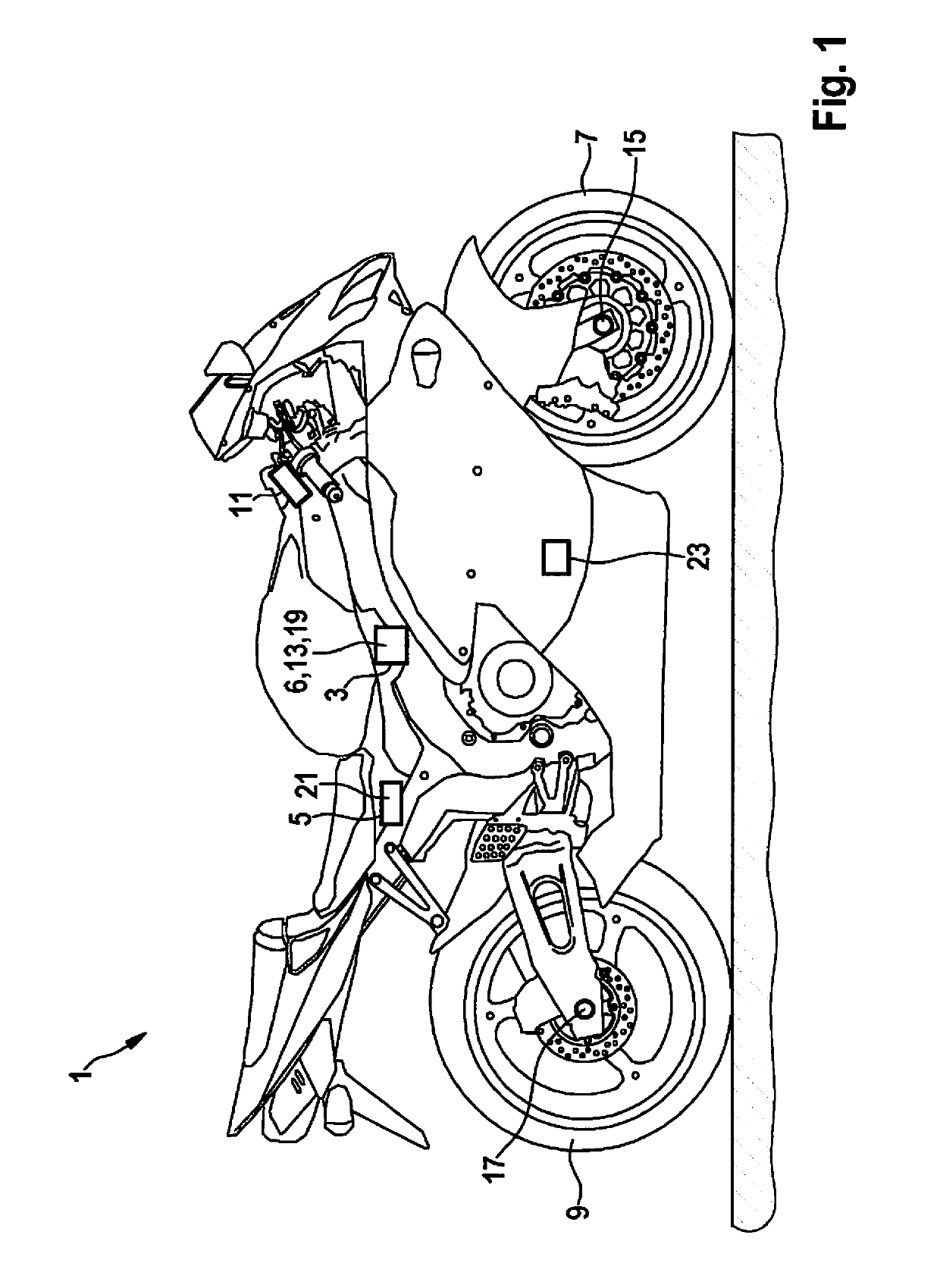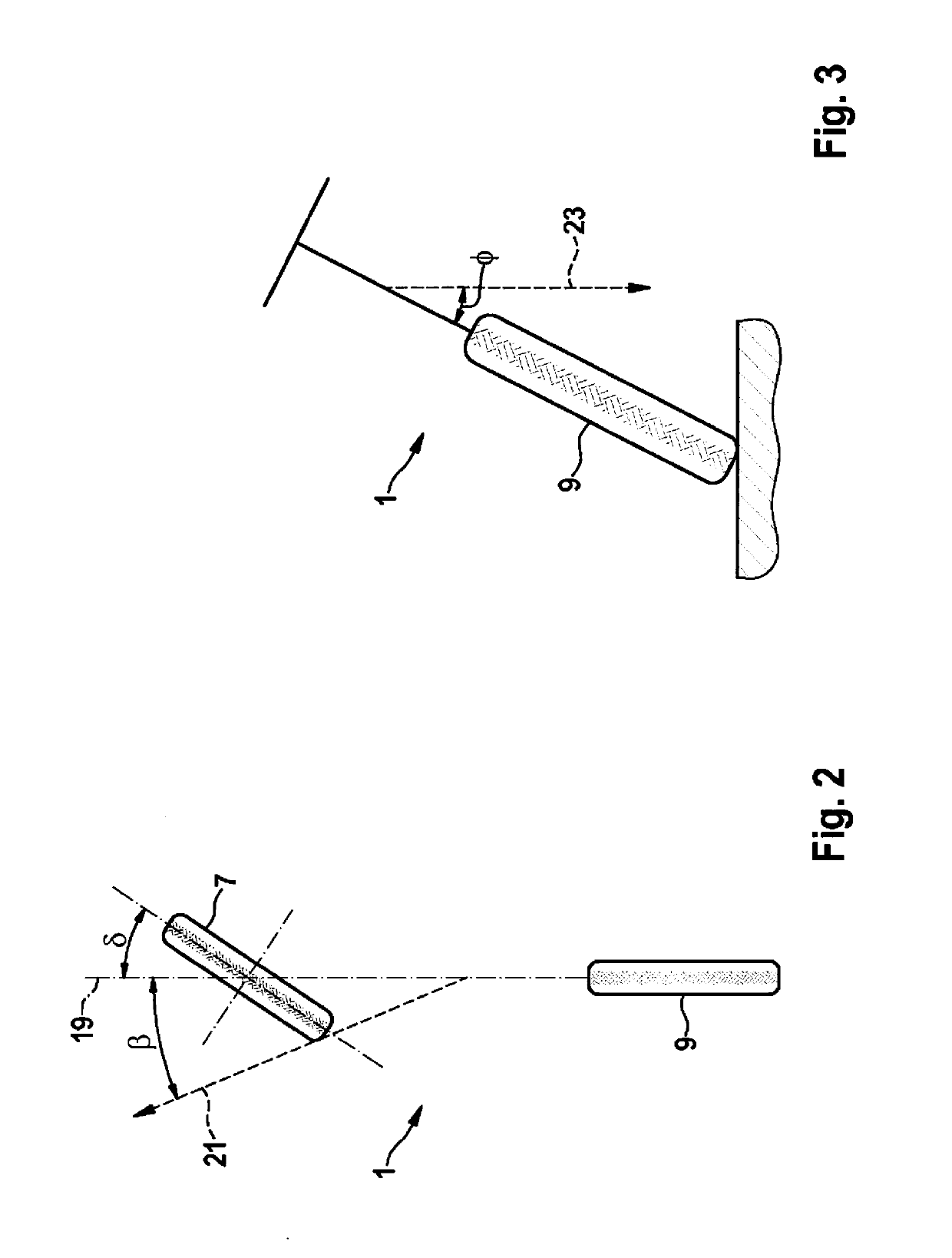Method and control unit for recognizing critical driving situations of a two-wheeled motor vehicle
a two-wheeled motor vehicle and critical driving technology, applied in the direction of brake systems, etc., can solve the problems of excessive over- or understeering of the vehicle, the consequences of exceeding the physical limits are often serious, and single-track vehicles are particularly susceptible to accidents. to achieve the effect of reducing the degree of severity of an acciden
- Summary
- Abstract
- Description
- Claims
- Application Information
AI Technical Summary
Benefits of technology
Problems solved by technology
Method used
Image
Examples
Embodiment Construction
[0038]FIG. 1 shows a two-wheeled motor vehicle 1 that is configured for carrying out the method provided herein for recognizing critical driving situations, with the aid of a specially configured control unit 3. Two-wheeled motor vehicle 1 includes a sensor system 5, which may be configured in particular in the form of an inertial sensor system, and with the aid of which a data processing unit 6 of control unit 3 is enabled to ascertain instantaneous slip angles of front wheel 7 or of rear wheel 9 of two-wheeled motor vehicle 1, changes in these slip angles over time, and an instantaneous roll angle of two-wheeled motor vehicle 1. In particular the sensor system may be configured for measuring or determining an instantaneous sideslip angle of two-wheeled motor vehicle 1, and may thus act as a sideslip angle sensor 21. In the illustrated example, sensor system 5 is shown as a separate component; however, it may also be integrated into control unit 3. Two-wheeled motor vehicle 1 also ...
PUM
 Login to View More
Login to View More Abstract
Description
Claims
Application Information
 Login to View More
Login to View More - R&D
- Intellectual Property
- Life Sciences
- Materials
- Tech Scout
- Unparalleled Data Quality
- Higher Quality Content
- 60% Fewer Hallucinations
Browse by: Latest US Patents, China's latest patents, Technical Efficacy Thesaurus, Application Domain, Technology Topic, Popular Technical Reports.
© 2025 PatSnap. All rights reserved.Legal|Privacy policy|Modern Slavery Act Transparency Statement|Sitemap|About US| Contact US: help@patsnap.com


